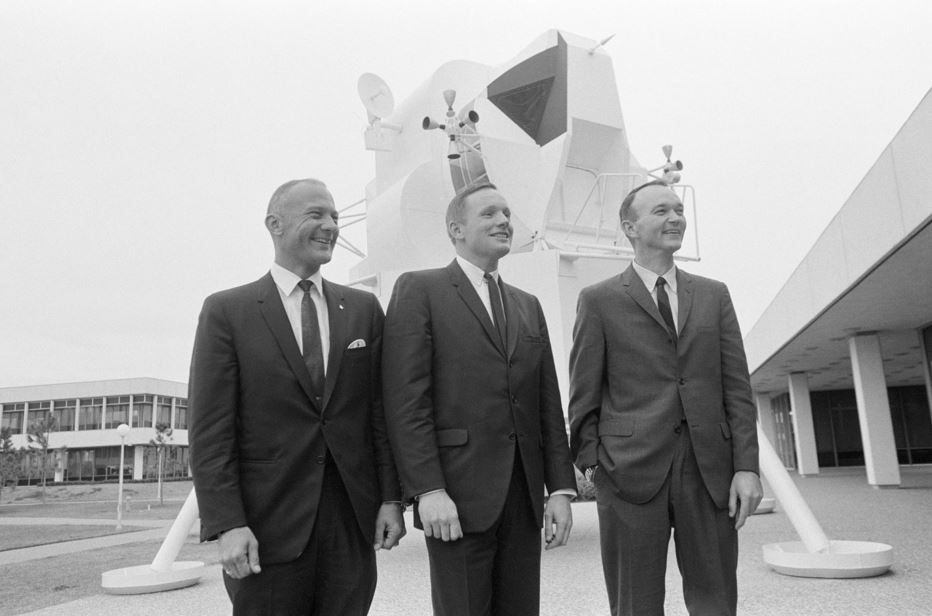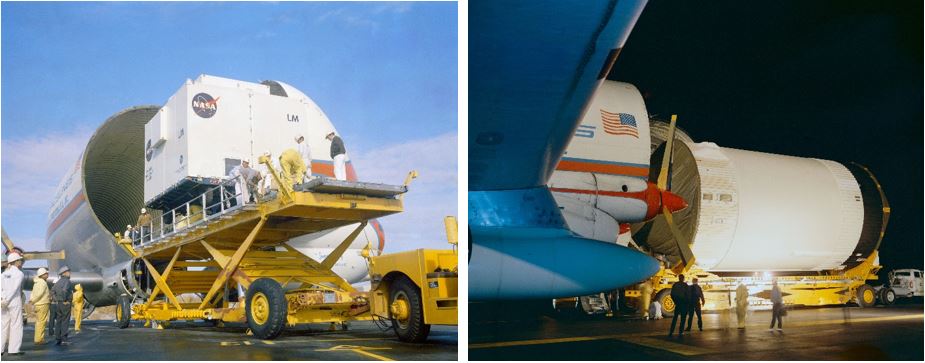On Jan. 9, 1969, NASA formally announced the crew for the Apollo 11 mission, scheduled for July of that year. Planned as the fifth crewed Apollo mission, if all went well on the two flights preceding it, Apollo 11 would attempt the first human lunar landing, fulfilling President John F. Kennedy’s goal of landing a man on the Moon and returning him safely to the Earth. The next day, NASA introduced the Apollo 11 crew during a press conference at the Manned Spacecraft Center, now the Johnson Space Center in Houston.
The prime crew consisted of Commander Neil A. Armstrong, Command Module Pilot (CMP) Michael Collins, and Lunar Module Pilot (LMP) Edwin E. “Buzz” Aldrin. All three were experienced astronauts, each having flown one Gemini mission. Armstrong and Aldrin had served on the backup crew for Apollo 8 the previous December and Collins was initially a member of that crew until a bone spur in his spine requiring surgery sidelined him. Fully recovered from the operation, NASA added him to the Apollo 11 crew. The Apollo 11 backup crew of Commander James A. Lovell, CMP William A. Anders, and LMP Fred W. Haise, would be ready to fly the mission in case something happened to the prime crew. Lovell and Anders had just completed the Apollo 8 lunar orbit mission and Haise was a backup crewmember on that flight. When Anders announced that he would retire from NASA in August 1969 to join the National Space Council (TBC), Thomas K. “Ken” Mattingly began training in parallel with Anders in case the mission slipped past that date.
Hardware for the Apollo 11 mission began arriving at the Kennedy Space Center (KSC) in January 1969. The Lunar Module (LM) ascent and descent stages arrived on Jan. 8 and 12, respectively, from their manufacturer, the Grumman Aircraft Corporation in Bethpage, New York. The Douglas Aircraft Corporation in Long Beach, California, shipped the Saturn V rocket’s S-IVB third stage to KSC on Jan. 19. North American Rockwell in Downey, California, shipped the Command Module (CM) and Service Module (SM) to KSC on Jan. 23, where workers mated the two craft six days later in preparation for preflight testing in the altitude chamber.
Astronaut biographies can be found at https://www.nasa.gov/humans-in-space/astronauts/






























